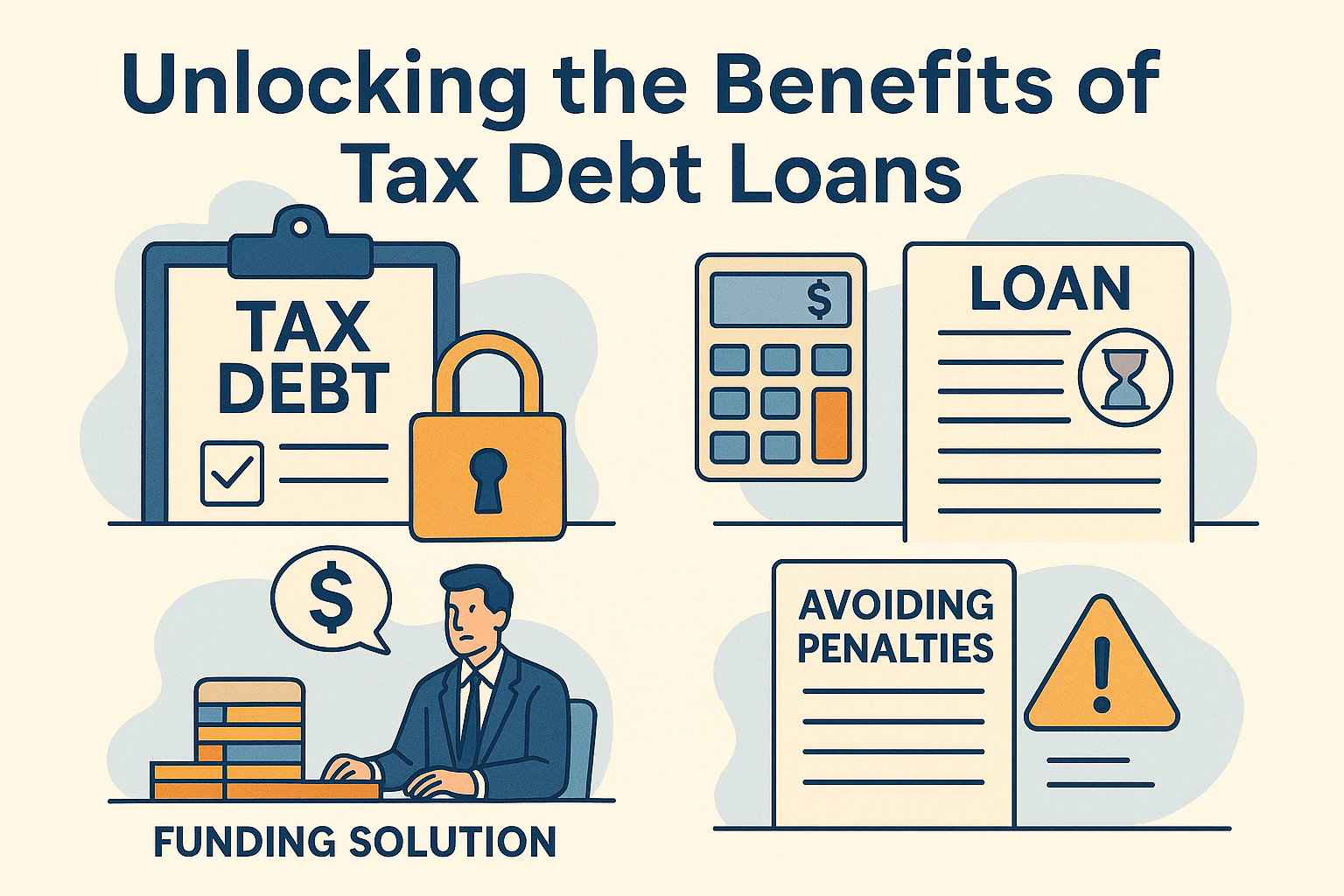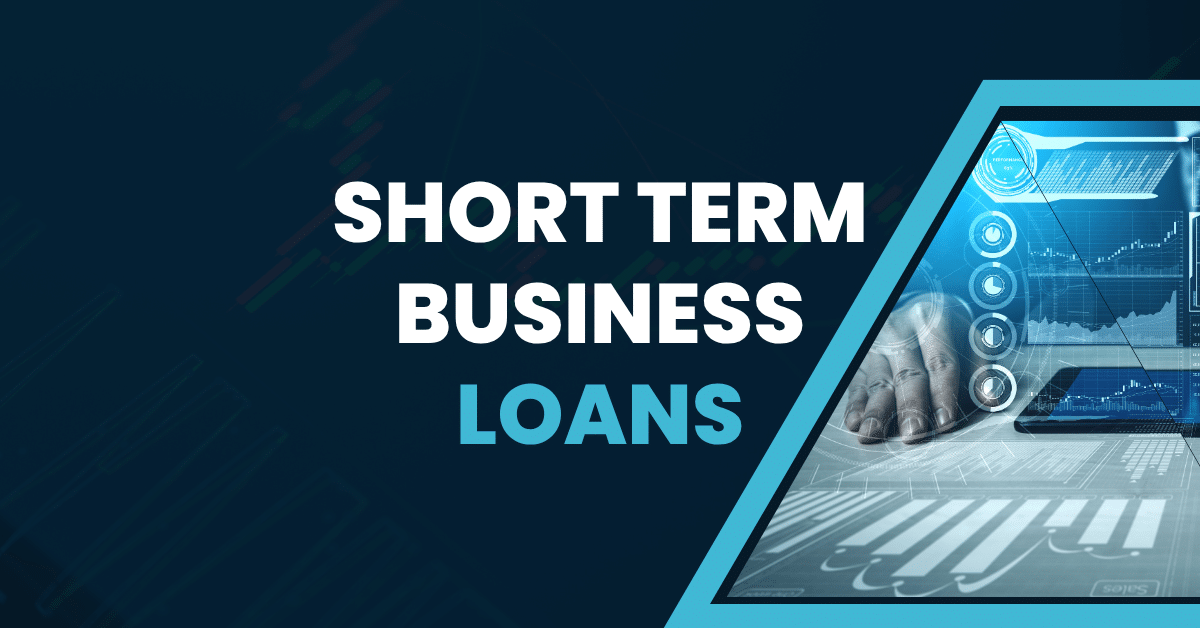Navigating the complexities of tax debt can be a daunting challenge for many small to medium-sized business owners. Tax debt loans present an opportunity to alleviate the financial burden and help businesses regain control over their finances.
By converting outstanding tax obligations into manageable loan payments, business owners can focus on growth and daily operations without the constant pressure of looming tax liabilities.
This blog post will guide you through the benefits of tax debt loans, highlighting how they can provide tax relief and effective debt management solutions. As a trusted advisor, our goal is to empower you with the knowledge to make informed financial decisions that support your business’s success.
Note: You can get your free PDF guide on tips for getting a business loan below.
Understanding Tax Debt Loans
Tax debt loans are a financial tool that can help businesses manage their tax obligations. This section will explore what these loans are, address common misconceptions, and outline eligibility criteria.
What Are Tax Debt Loans?
Tax debt loans are financial products designed to help businesses pay off their tax debts. These loans provide funds to cover outstanding tax liabilities, allowing businesses to settle their debts with the tax authorities immediately.
The loan amount is typically based on the total tax debt owed. Interest rates and repayment terms vary depending on the lender and the borrower’s financial situation.
By using a tax debt loan, businesses can avoid penalties and interest from the tax authorities while spreading the repayment over a more manageable timeframe.

Common Misconceptions
Many business owners have misconceptions about tax debt loans that can prevent them from considering this option. Let’s address some of these myths:
Myth 1: Tax debt loans are only for failing businesses.
Reality: These loans can benefit businesses of all sizes and financial standings, helping them manage cash flow more effectively.
Myth 2: Getting a tax debt loan means admitting financial failure.
Reality: Using a loan to manage tax debt is a proactive financial strategy, not an admission of failure.
Myth 3: Tax debt loans always have high interest rates.
Reality: Interest rates vary and can be competitive, especially compared to tax authority penalties and interest.
Eligibility Criteria
To qualify for a tax debt loan, businesses typically need to meet specific criteria. While requirements may vary by lender, common eligibility factors include:
-
A minimum credit score (often 600 or higher)
-
Proof of steady business income
-
A detailed plan for repayment
Lenders will also consider the amount of tax debt owed and the business’s overall financial health. Some may require collateral, especially for larger loan amounts.
It’s important to note that having tax debt doesn’t automatically disqualify a business from obtaining a loan. Many lenders specialize in working with businesses facing tax challenges.
Advantages of Tax Debt Loans
Tax debt loans offer several benefits to businesses struggling with tax liabilities. This section will explore the immediate financial relief, simplified debt management, and potential for improved credit scores.
Immediate Financial Relief
Tax debt loans provide quick access to funds, offering immediate relief from pressing tax obligations. This financial breathing room can be crucial for businesses facing tight cash flow situations.
By settling tax debts promptly, businesses can avoid accruing additional penalties and interest from tax authorities. This can result in significant savings over time, especially for substantial tax debts.
The immediate payment of tax liabilities also removes the stress of dealing with tax authorities, allowing business owners to focus on running and growing their operations.
Simplified Debt Management
Tax debt loans consolidate multiple tax liabilities into a single, more manageable debt. This simplification can make financial planning and budgeting easier for businesses.
Instead of juggling multiple payment deadlines and varying interest rates, businesses can focus on a single monthly payment. This predictability aids in cash flow management and long-term financial planning.
Many tax debt loan providers also offer flexible repayment terms, allowing businesses to choose a plan that aligns with their financial capabilities and goals.
Improved Credit Scores
Paying off tax debts through a loan can positively impact a business’s credit score in several ways:
-
Timely payments on the loan demonstrate financial responsibility
-
Reduced overall debt can improve the debt-to-income ratio
-
Avoiding tax liens prevents negative marks on credit reports
Over time, these factors can lead to a higher credit score, potentially opening up more favorable financing options for the business in the future.
It’s important to note that the initial act of taking out a loan may cause a temporary dip in the credit score. However, consistent repayment typically leads to long-term credit improvements.
Comparing Tax Relief Options
When facing tax debt, businesses have several options to consider. This section will compare tax debt loans with other standard relief methods, including payment plans and settlements, and provide real-world success stories.
Tax Debt Loans vs. Settlements
Tax settlements involve negotiating with tax authorities to pay less than the full amount owed. Here’s how they compare to tax debt loans:
Tax Debt Loans:
-
Pay the full amount owed
-
Maintain good standing with tax authorities
-
Potentially improve credit score
Settlements:
-
May reduce total debt owed
-
It can negatively impact a credit score
-
May have tax implications
While settlements can reduce the total debt, they often come with significant drawbacks and are not always approved by tax authorities.
Case Studies: Success Stories
Let’s look at two real-world examples of businesses that benefited from tax debt loans:
Case 1: Small Retail Store
-
Initial tax debt: $50,000
-
Loan terms: 5-year repayment at 8% interest
-
Outcome:
-
Avoided $10,000 in penalties
-
Improved cash flow
-
Credit score increased by 50 points
-
Case 2: Medium-sized Manufacturing Company
-
Initial tax debt: $200,000
-
Loan terms: 7-year repayment at 7.5% interest
-
Outcome:
-
Prevented business closure
-
Retained all employees
-
Expanded operations within 2 years
-
These cases demonstrate how tax debt loans can provide both immediate relief and long-term benefits for businesses of different sizes and industries.
Choosing the Right Financial Assistance
Selecting the appropriate financial assistance for tax debt is crucial. This section will guide you through evaluating your financial situation, choosing a trustworthy lender, and applying for a loan.
Evaluating Your Financial Situation
Before seeking a tax debt loan, it’s essential to assess your business’s financial health thoroughly. This evaluation will help determine the most suitable solution for your tax debt issues.
Start by gathering all relevant financial documents, including tax returns, profit and loss statements, and cash flow projections. These will provide a clear picture of your business’s financial standing.
Next, calculate your debt-to-income ratio and analyze your cash flow. This information will help you determine how much you can realistically afford to repay each month.
Selecting a Trustworthy Lender
Choosing the right lender is crucial when considering a tax debt loan. Here are key factors to consider:
-
Reputation and experience in tax debt financing
-
Transparency about fees, interest rates, and terms
-
Flexibility in loan structures and repayment plans
-
Quality of customer service and support
Research potential lenders thoroughly, reading reviews and checking their standing with business bureaus. Don’t hesitate to ask for references from other businesses they’ve helped.
Remember, a trustworthy lender will be interested in your long-term financial health, not just in closing a deal.
Steps to Apply for a Loan
Once you’ve chosen a lender, follow these steps to apply for a tax debt loan:
-
Gather necessary documents (tax returns, financial statements, business plan)
-
Complete the lender’s application form
-
Provide any additional information requested by the lender
-
Review and understand the loan terms before signing
-
Create a repayment plan that aligns with your business’s cash flow
Be prepared for the lender to conduct a thorough review of your business’s finances. This process may take several days to a few weeks, depending on the complexity of your situation.
Expert Tips for Debt Management
Effective debt management goes beyond securing a loan. This section offers expert advice on budgeting, seeking professional guidance, and monitoring your financial progress.
Budgeting for Long-Term Stability
Creating a robust budget is crucial for long-term financial stability and successful debt management. Here are the key steps to develop an adequate budget:
-
Track all income and expenses meticulously
-
Categorize expenses as essential or non-essential
-
Identify areas where costs can be reduced
-
Set realistic financial goals for your business
Regularly review and adjust your budget as your business evolves. This flexibility will help you stay on track with loan repayments while also investing in growth opportunities.
Remember, a well-planned budget is not just about cutting costs; it’s about allocating resources efficiently to support your business’s financial health and growth.
Seeking Professional Advice
While managing tax debt, professional advice can be invaluable. Consider consulting with:
-
Tax attorneys: For complex tax issues and negotiations with authorities
-
Certified Public Accountants (CPAs): For tax planning and financial strategy
-
Financial advisors: For overall business financial planning
These professionals can provide tailored advice based on your specific situation, potentially uncovering options or strategies you hadn’t considered.
Don’t hesitate to seek multiple opinions, especially for significant financial decisions. The proper professional guidance can save you money and stress in the long run.
Monitoring Your Financial Progress
Regular financial monitoring is essential to ensure you’re staying on track with your debt management plan. Here are key areas to focus on:
-
Cash flow: Track incoming and outgoing funds weekly or monthly
-
Debt repayment: Monitor loan balances and ensure timely payments
-
Profitability: Regularly assess your profit margins and adjust strategies as needed
Consider using financial management software to streamline this process. Many tools can provide real-time insights into your business’s economic health.
Set specific financial milestones and review your progress quarterly. This practice will help you identify and address any issues early, keeping your debt management plan on track.




